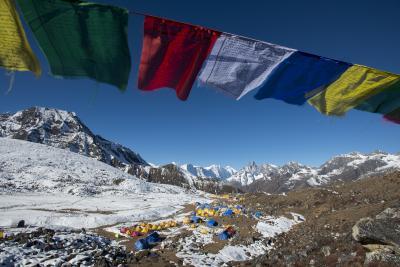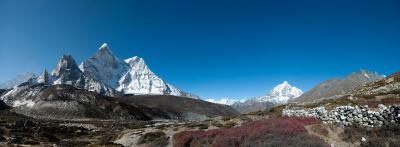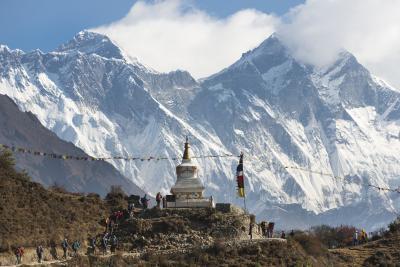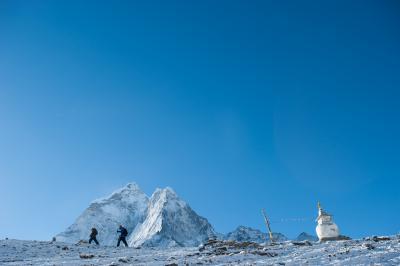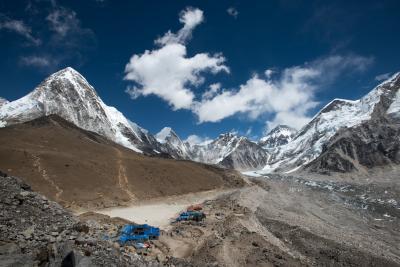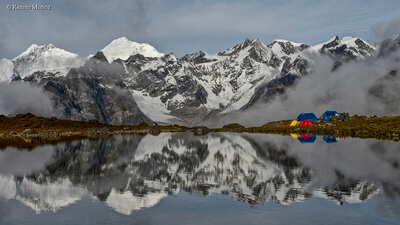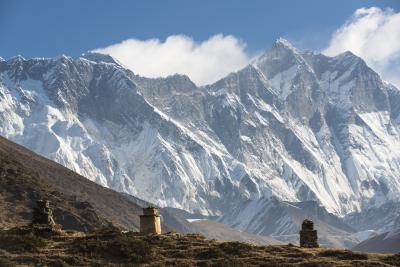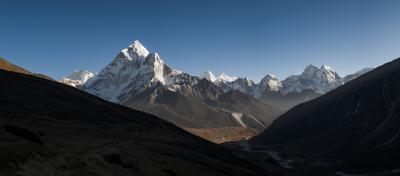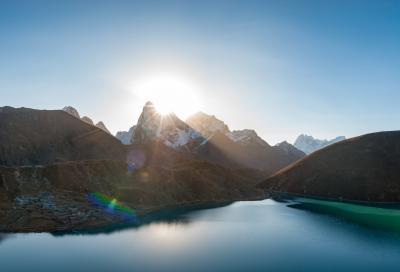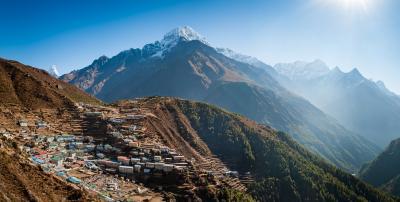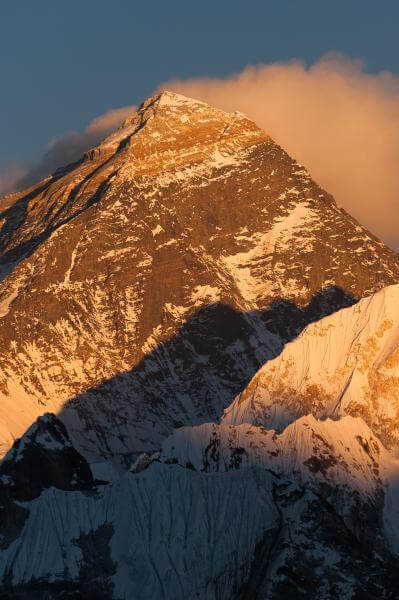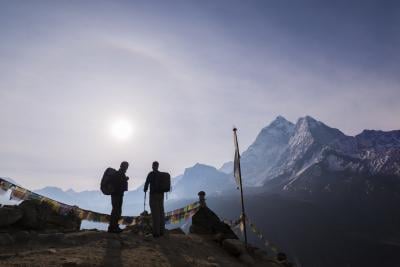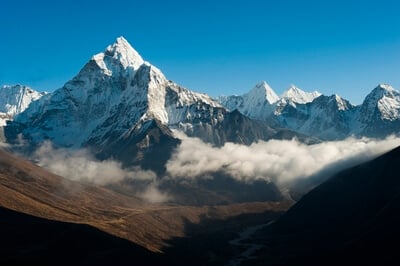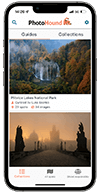The photography guide to
 Everest Region
Everest Region
Everest Region photography guide
Our contributors have added 24 photo spots to this Everest Region photo guide. Have you discovered an amazing new location in Everest Region?
Introduction
For me, a day spent trekking and taking photos in the Everest Region is about as good a day as I can hope to have. Nothing rivals the world’s highest mountain range for sheer magnificence and it doesn’t disappoint photographically.
Without the need for mountaineering skills, it’s possible to get to some of the greatest viewpoints on earth at the top of trekking peaks such as Gokyo Ri and Kala Patthar, and there’s a multitude of trails and side trails to explore. Giant peaks above immense glaciers which work their way into tumbling rivers and down to forests full of colourful rhododendrons. There are photos and adventure to be had everywhere. It’s simply impossible not to be inspired in the Everest Region.
Most popular Everest Region photo spots
Top Picks
It’s all good, but if I had to choose a favourite it’s hard to beat Gokyo Ri. It’s one of the greatest views on earth and there’s endless scope for pictures. Regardless of getting a great shot or not, just being there is one of life’s memorable moments. Be sure to take some very warm clothes so you can stay up there for a night shot too. My next choice is one of the lesser known places called ‘Nangkartsang viewpoint above Dingboche’, it’s a real gem of a spot. It’s not such a huge climb from Dingboche, it generally only takes an hour of so to get up there, but the rewarding views make it more than worth it. It’s definitely one not to miss. Lastly I’ve chosen the spot called ‘Namche Bazaar and Kongde peak’ as a favourite. Sometimes it’s the simple ones right in front of you that can get missed. You will almost certainly pass through Namche and spend a couple of nights there during your time in the Everest Region, so make sure you take the short walk up to this point as it’s a stunner of a spot, especially on a moonlit night with the village glowing below the mountains.
Travel
There are two ways to reach the Everest Region from Kathmandu. The quickest and most popular option is the short flight to Lukla (30-40 minutes). Another option, and recommended, is to travel by road (either by bus or jeep) to Jiri and walk to Lukla from there. Depending on your walking speed this will extend your trek considerably; it can take anywhere between 8-12 days to walk from Jiri to Lukla, but this is a quiet route passing through traditional villages in the lower part of the Everest region. Coming this way also gives the opportunity to take a side trip to the spot called ‘Pikey Peak’ which, on a clear day is magnificent.
Even though the Everest region is a demanding area to walk in due to the high altitude, the logistics of getting around and finding places to stay are relatively straightforward. For a start, you have to walk everywhere, so parking is not a problem! Trails are generally easy to follow (with some exceptions), and the whole of the Everest Region is well established for trekking so there’s lots of places to stay.
It’s now required that everyone trekking in the region is accompanied by a guide, but this is a positive thing for many reasons; It’s safer to have a local expert on hand showing you the way and helping you across any tricky stretches of trail, especially when loaded down with camera gear. Your guide can also help you to communicate with locals, which is invaluable if you want to spend any time taking portraits. It’s also a good thing to support the guides and porters in the area by providing work for them.
There are two main seasons for trekking in the Everest region; spring and autumn. The spring season runs from late March through May and the autumn season from mid-September to early December. It is possible (and often rewarding) to trek outside these main seasons. In the winter (December-February) the weather is very likely to be clear, but also it can be extremely cold and you would need to be well prepared. There will be a fraction of the people filling the trails but there will also be little green in the valleys and the trails can be dusty. By compromise in the summer, there’s a lot more colour but the chances of clear days decreases dramatically.
The book ‘Trekking in the Everest Region’ published by Trailblazer (written by Jamie McGuiness) is indispensable. I haven’t gone into much detail in this guide regarding planning and trekking equipment as you should certainly refer to a guide book before trekking in the Everest Region. This book will tell you everything you need to know.
If you plan to spend time in other trekking regions, the book ’Trekking in the Nepal Himalayas’ published by Lonely Planet is very good (Bradley Mayhew).
Even though mobile reception is surprisingly good in the Everest region, you should never rely on it. Make sure you have downloaded this guide before leaving Kathmandu. Be sure to have a good map of the region and a compass with you.
The biggest and most reliable mobile network in Nepal is Ncell. Temporary SIM cards can be purchased throughout Nepal. Reception varies but it is surprisingly good in the Everest Region. However 3G and 4G connections can be very slow, so be sure to download the guide fully before your trek.
Electricity is 220V. Sockets usually take plugs with three round pins, sometimes the small variety, sometimes the large. Some sockets take plugs with two round pins. Local electrical shops sell cheap adapters.
You can charge phones and batteries at most tea houses in the Everest region but be prepared to pay a premium for this. It’s wise to have a few fully charged and perhaps invest in a solar charging mat if your planning more trips to the wilderness in the future.
Events
If you would like to experience one of Nepal’s most lively and colourful festivals you can think of planning your trek to Everest Base Camp at the same time as the spring festival of Holi - The Festival of Colour, which happens in March. The actual date of the festival varies from year-to-year and is determined by the approach of the full moon before the spring equinox.
Links
The Mountain Company
Himalayan Trails
Project Himalaya
The Last Resort
Trekking Partner
Curated By
Alex Treadway Author
We hope you enjoy this guide to photographing Everest Region - don't forget to share your images on PhotoHound and tag us on social media using hashtag #photohound
